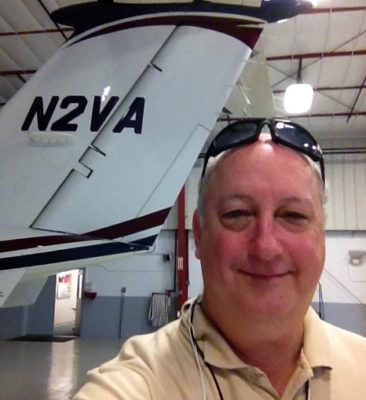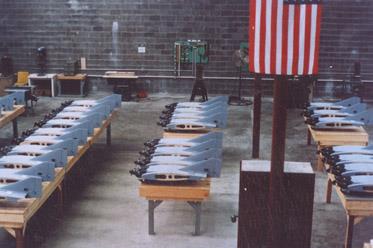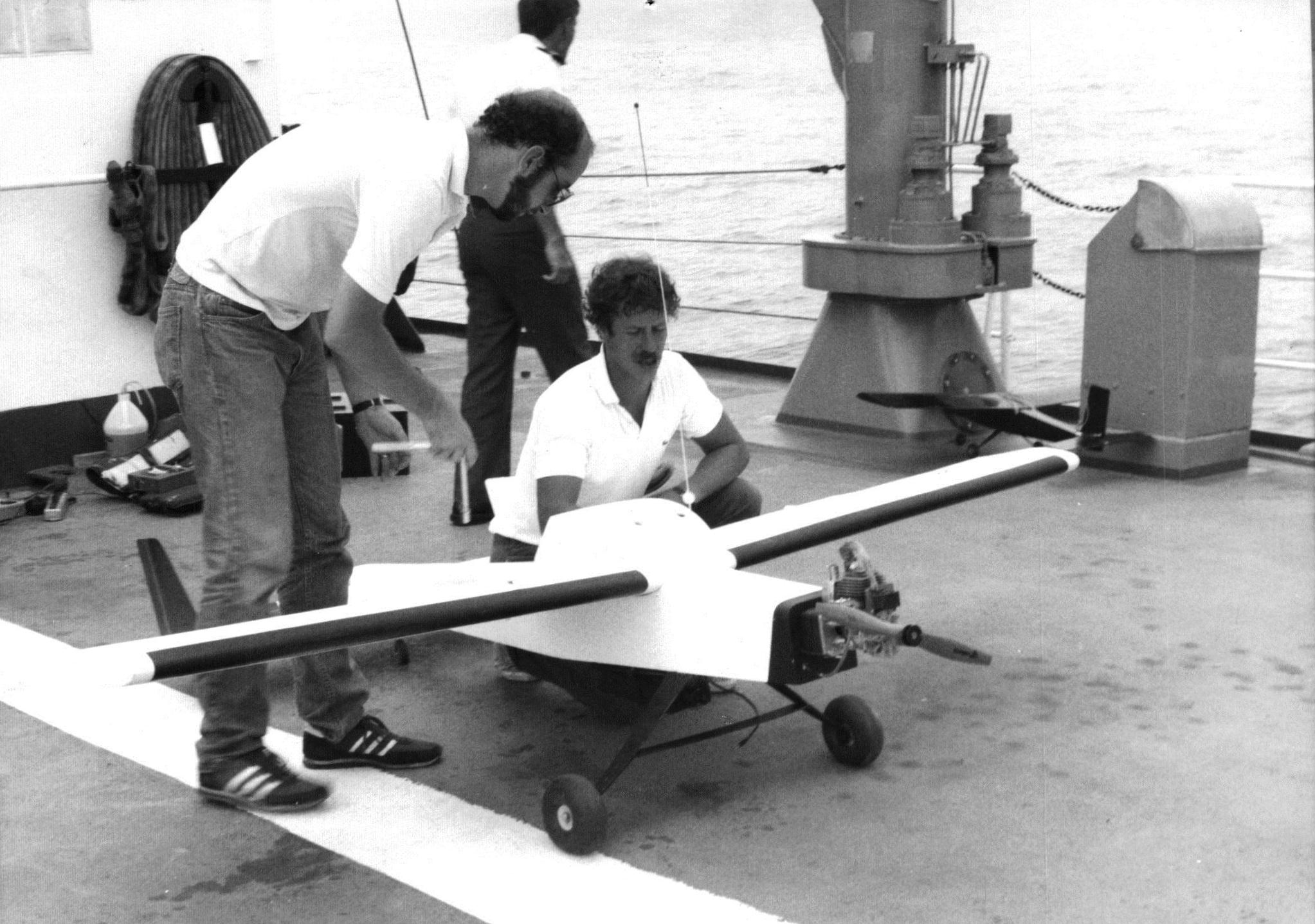As the Managing Director at Nexutech, Jay Willmott leads a group of seasoned senior-level subject matter experts specializing in unmanned systems and related technologies. He is a two-time past AUVSI Chapter President (Hampton Roads & D.C. Chapters) who began his long drone career manufacturing remotely piloted aircraft during the mid-‘80s when he oversaw development, production and deployment of several hundred small UAVs and related support equipment for delivery to DOD and international clientele.
In 2016, Willmott was named Virginia’s Aviation Person of the Year, the first time an unmanned aviator has received that recognition, for his support of the drone industry and his long-standing efforts to support aviation-related STEM education activities. Today, many of his efforts are focused on the Virginia area, which is home to the Mid-Atlantic Partnership at Virginia Tech that
won an FAA IPP program in conjunction with the Virginia Center for Innovative Technology. Their proposal was designed to facilitate package delivery in rural and urban settings and included the use of enabling technologies such as detect and avoid, Identification and tracking, radar systems, and mapping tools. The data obtained from these operations are set to provide scalable benefits to the agency and industry.
We’ve explored the
potential ramifications of several
IPP initiatives, and the changes they could enable for the industry as a whole are significant. However, before continuing on with that looking into the future, we wanted to get a better sense of how we got to now, and Willmott provided us with some important context around the journey of drone technology as a whole. We discussed the ramifications of the proliferation of the technology, what he sees taking shape in this drone market of the future and much more.
Jeremiah Karpowicz: As someone with over 30 years in the unmanned aviation industry, what can you tell us about the early days of drone technology?
Jay Willmott
Jay Willmott: Well, I’d like to think the “early days” were a little before when I got started, but I’ll tell you what I remember:
I recall having to invent many of the capabilities that are taken for granted today. For instance, we built our own autopilots before GPS and then had to learn how to incorporate GPS, and figure out why we had no signal when we used relatively “dirty” video transmitters that jammed our signal with sideband noise or harmonics. I remember holding directional antennas for hours and being the “human tracker” using a tone generated in an earbud. I remember gradually making the transition from traditional wood and metal materials to composites, and then figuring out how to reliably and consistently manufacture production runs of parts using composite materials and new tools like waterjet and laser cutters. In effect, we were transitioning from decades of analog technology into the digital era.
In the 1980s, most unmanned aircraft were fixed-wing and fairly large ones, at that, because the equipment they carried was large and heavy. There was practically no commercial market for unmanned systems, and getting the defense department to plan for and fund the use of unmanned aircraft was challenging, although we foresaw many of the common uses for systems today for applications like power and pipeline inspection, fishing and agriculture. But the basic building blocks we take for granted today, things like GoPro cameras, Ardupilots and the like simply didn’t exist and really grew out of the commercial demand for those types of things in products like cell phones, not drones.

BAI Aerosystems Exdrone UAV Factory circa 1989
We always had a mission to accomplish. That is what drove what we did, and that’s probably true for most of the companies in business back then. Our industry was primarily defense-oriented, so Intelligence, surveillance and reconnaissance were the end game. Along the way, we created what was needed to support that mission.
The greatest lessons on how to improve the systems we manufactured came from field operators, so I think it’s valuable for producers to stay in tune with how their equipment is being used and where opportunities lie to not only improve the current offering but also where system enhancements and growth can take place…where the rubber hits the road. The phrase “racing improves the breed” is accurate, especially if producers listen to the feedback from operators and crews who offer insight based on their real-world operational experience.
It’s a mistake to “fire and forget” products into the marketplace and ignore the opportunities that come from being engaged with the consumer.
Fast forward to today, and based on how you’ve seen things progress, are you surprised to find the technology where it’s at both in terms of capability and awareness? I’m not surprised at the technology so much as its sudden widespread acceptance and proliferation over the past few years. The manufacturers have succeeded in enabling a large commercial marketplace by lifting the technology up and away from the dilettante DIY tinkerers by making it easy and satisfying to use. A difficult to program product is not satisfying…unreliable is not satisfying…expensive, lost or frequently broken is unsatisfying. Affordable, easy to use, functional and fun IS satisfying and easier to sell to more people.
I think it was a mistake for early quadcopter developers to concentrate on the hacker mentality, and successful manufacturers that came later realized that the average consumer wanted to fly, not tinker. It’s basically the same phenomenon that the Radio Controlled (R/C) model aircraft industry underwent when the “ARF” (Almost Ready to Fly) ilk of model airplanes began to hit the market back in the mid-1970s, when the elitist aeromodelling community proclaimed ARFs “not as good as” their old stick-built aircraft construction. The R/C modeling sport exploded when affordable products came along that were arguably better and offered similar performance. That same sport has continued to evolve based on new technologies in propulsion and batteries that are driving the development of the commercial drone market.
Likewise, as consumer tastes move away from World War II-style model aircraft and toward more contemporary designs, the earlier models will become a smaller piece of that marketspace, and will only be of interest to a shrinking population of “vintage” or “legacy” practitioners. I think the biggest leap forward is not in how well the aircraft can fly, but in how much it can accomplish.
You mentioned the widespread proliferation of the technology, but how often do you hear from people who are worried about a machine taking someone’s job? Not very often. You know, that’s a misconception that probably goes back to the Industrial Revolution. What happens is there is a shift in the kinds of jobs, from low tech to high tech. The unmanned systems used by the military are anything but unmanned, BTW.
There’s always going to be a man (or a woman) in the loop somewhere. When the automotive manufacturers adopted robots, they still had to hire people…some of that was because of union demands…but there were different jobs created as a result of the “robotization” of that industry.
Along those same lines, are the predictions around a swarm of drones covering our skies just a scare tactic, or is there something to be concerned about in terms of the ubiquity of the technology? I think it’s going to be about the sky filled with all sorts of things because it can be and that’s where the future is taking us.
Unmanned aircraft and the technologies that enable them to do what they do are changing the aspects of other transportation, and manned flight will become more ubiquitous and egalitarian as enabling technologies make it possible and practical for “everyman” (or everywoman) to avail themselves of flight, whether it be to get groceries from the store to the pantry or to take the family to grandmother’s house for Thanksgiving. We will be taking to the air in numbers we cannot even imagine and the skies will be filled with lots of things and people, so we need to figure out how to make the skies safe for everyone, not just the “hordes of drones” the futurists keep warning us about. The same tech that gets a drone from point A to point B will help keep manned systems safe in the air, as well. I am proud that the unmanned systems industry is leading the development of miniature sensors and traffic management tech that will ultimately benefit the unmanned and manned aviation communities.
George Jetson didn’t seem too concerned about having a robotic housekeeper (“Rosie the Robot”) or running into other flying objects. At one time, a U.S. Congressman decried the emergence of train technology, saying “men cannot live at such speeds” and the expectation was a whopping 25 miles per hour! Humankind has an amazing ability to adapt but also a deep capacity to fear the unknown. Agencies like FAA exist to throttle the pace of development so we are kept safe from ourselves. But worrying about the future will just give you ulcers; instead, it’s far better to help drive the changes that are coming, to be a part of the evolution, not just a scared bystander.
What are the biggest challenges associated with enabling or being part of that evolution for the drone industry as a whole? I think the biggest thing we have to fear is lawyers, litigation, and regulation. That’s just how it is in this country. The industry has not made enough investment in promoting itself within the various state houses and up on capitol hill to ensure that its interests won’t be steamrolled again by lawsuits like it was with privacy a couple of years ago. The people who are making money hand over fist in this business today need to take a long view of the industry and work now to establish self-regulation before it is thrust upon them, and to generate engineering, manufacturing and quality standards the same way other industries have done as a form of self-regulation, lest the politicians decide for them what is needed.
I am all for industry regulation, but what’s really needed is a way to
enforce those regulations so that we protect the businesses who want to comply with the necessary standards. I mean, my plumber has a certification, my electrician has a license, why is it so onerous to have the same expectation for drone operators? But we need to protect the operators who invest in doing things the right way by figuring out how to weed out unlicensed, unscrupulous operators.
What has you excited about the next five years in the unmanned industry? I’m excited about continuing advances in battery technology, and the opportunity for increased aviation and engineering job growth as more and more people get drawn into doing things with unmanned systems due to the ”pull” of drones today. It’s exciting to think that drones will have stimulated a new generation of transportation and other engineers. They are a great asset for STEM career growth, something we badly need in this country. Yet, it doesn’t have to be about the “drone”, and we too often fixate on the “flying” piece of the industry. So many careers can be made in cyber, analytics, maintenance and other peripheral activities that are part and parcel of the so-called drone industry. The drone is merely an icon for the trade. I often say that today’s multi-copters may be the 8-track tapes of their time. I can’t wait to see what the products and the industry look like in five years.
Do you envision the sort of growth you’ve seen will continue along the same pattern over the next 30 years? Or move even faster? I think it can’t help but grow faster, especially in the regulatory / FAA airspace access sense, where finally things are starting to receive the kind of attention and funding they needed to move forward, which hasn’t been the case for most of the past 30 years. Regulatory barriers have definitely slowed growth in this market.
In the past, growth came in spurts as a result of U.S. Government funding, and most of that was DOD spending, so drone technology development was largely driven by periodic conflicts, and to a lesser extent, efforts toward force modernization. Eventually, derivative applications were spawned as once-sophisticated defense technologies “trickled down” into commercial and hobby applications…things like GPS, miniature IMUs and infrared sensors that were once the exclusive domain of defense users are now, to a large degree, commonplace.
While we can all thank Uncle Sam for creating many of these “enabling technologies” used in our drones, the DOD is no longer the largest -volume- consumer of small drone technology, and it’s now a consumer market that is driving the development of new drone tech. To a large extent, that market is now in charge of its own destiny.

















Comments